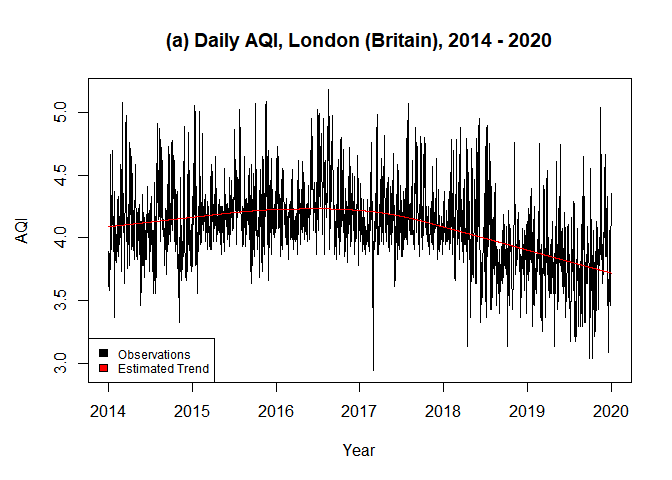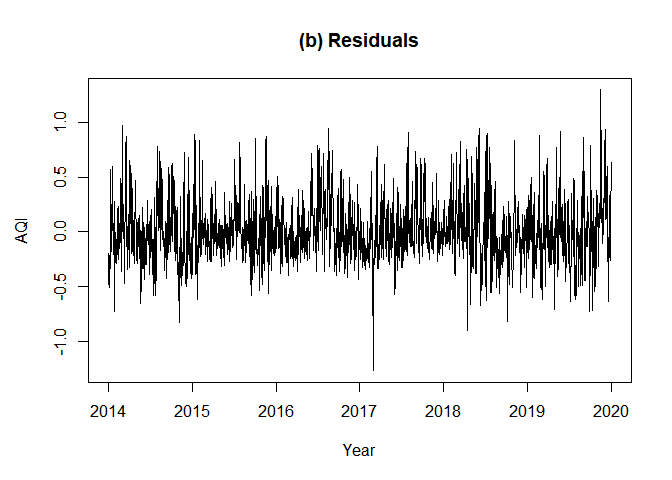

The goal of esemifar is to provide an easy way to estimate the nonparametric trend and its derivatives in trend-stationary, equidistant time series with long-memory stationary errors. The main functions allow for data-driven estimates via local polynomial regression with an automatically selected optimal bandwidth.
You can install the released version of esemifar from CRAN with:
This is a basic example which shows you how to solve a common problem. The data airLDN in the package contains daily observations of the air quality index of London (Britain) from 2014 to 2020. The data was obtained from the European Environment Agency. To make use of the esemifar package, it has to be assumed that the data follows an additive model consisting of a deterministic, nonparametric trend function and a zero-mean stationary rest with long-range dependence.
data <- airLDN # Call the 'airLDN' data frame
Yt <- log(data$AQI) # log-transform the data and store the actual values as a vector
# Estimate the trend function via the 'esemifar' package
results <- tsmoothlm(Yt, p = 1, qmax = 1, pmax = 1, InfR = "Var")
# Easily access the main estimation results
b.opt <- results$b0 # The optimal bandwidth
trend <- results$ye # The trend estimates
resid <- results$res # The residuals
b.opt
#> [1] 0.2423177
coef(results$FARMA.BIC) # The model parameters
#> d ar
#> 0.1032687 0.5435804

An optimal bandwidth of 0.2423177 was selected by the iterative plug-in algorithm (IPI) within tsmoothlm(). A FARIMA (1, d, 0) was obtained from the trend-adjusted residuals with d̂ = 0.1032687 and ϕ̂ = 0.5435804. Moreover, the estimated trend fits the data suitably and the residuals seem to be stationary.
The trend estimation function can also be used for the implementation of semiparametric generalized autoregressive conditional heteroskedasticity (Semi-GARCH) models with long memory in Financial Econometrics (see Letmathe et al., 2021).
In esemifar three functions are available.
Original functions since version 1.0.0:
dsmoothlm: Data-driven Local Polynomial for the Trend’s Derivatives in Equidistant Time Seriestsmoothlm: Advanced Data-driven Nonparametric Regression for the Trend in Equidistant Time SeriescritMatlm: FARIMA Order Selection MatrixData Sets
airLDN: Daily observations of individual air pollutants from 2014 to 202 gdpG7: Quarterly G7 GDP between Q1 1962 and Q4 2019